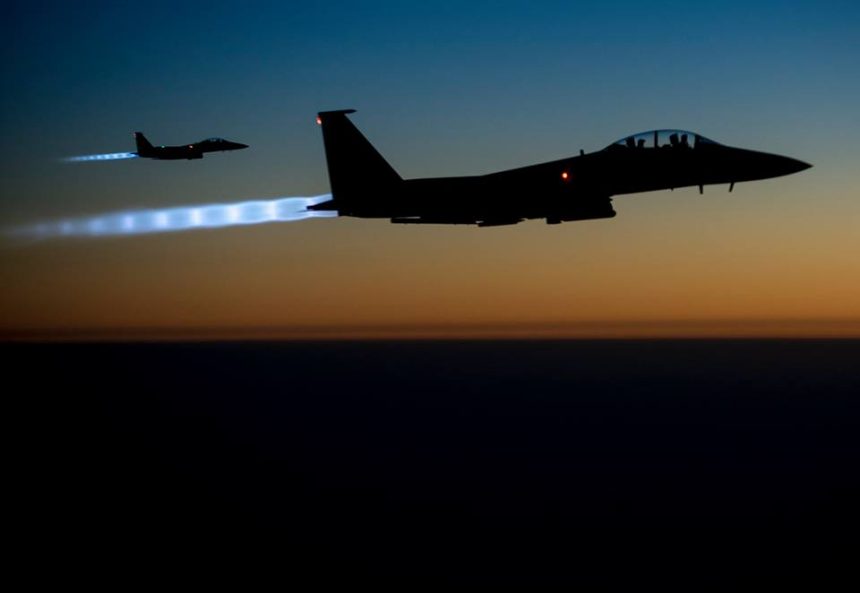Not only F-22 Raptors conducted the air strikes on ISIS in Syria. F-15E Strike Eagles took part to the first coalition strike package.
According to the U.S. Air Force, F-15E Strike Eagles were part of the large coalition strike package that was the first to strike ISIS targets in Syria.
The attack planes, that were already taking part in the offensive against terrorist in Iraq, must have been those of the 48th Fighter Wing, from RAF Lakenheath, currently deployed to Al Udeid, Qatar Al Dhafra, UAE.
Although it could be guessed, the opening wave of the air strikes in Syria included a mix of stealth and conventional planes. Among them, there were also F-15E Strike Eagles that, although far from being radar-evading, can carry more weaponry than the F-22s that, according to official sources, employed only two 1,000-lb GBU-32 GPS-guided JDAMs (Joint Direct Attack Munitions).
So, were the F-22s really necessary?
Yes and no.
For sure the air strikes take place well inside an airspace still guarded by Syrian air defense radars and surface to air missile batteries, where Syrian planes involved in their domestic war against rebels, usually operate. Moreover it’s quite difficult to assess the current state of the Syrian air defenses (some equipment was seized by rebels, other systems were probably restored or being restored, others may be in the hands of some groups, etc.) and, considered that it seems these first strikes were not aimed at the Syrian anti-aircraft equipment, it’s safe to say they can still theoretically pose a threat to U.S. and allied airplanes. Do you remember what happened to the Turkish RF-4E shot down by Syrian anti-aircraft artillery fire a couple of years ago?
Even if any sort of reaction by some of these Syrian air defenses was and still is quite unlikely, stealth planes, supported by EW (Electronic Warfare) platforms, could be used to attack targets close to SAM batteries and other dangerous spots.
Hence, the F-22 Raptor stealth fighters were useful because of their ability to enter, mostly undetected, an anti-access target aerea, gather details about the enemy systems with their extremely advanced onboard sensors, escort other unstealthy planes and, last but not least, attack their own targets with JDAMs.
In recent exercises, F-22s flew dual missions that they will probably fly over Syria as well: HVAAE (High Value Air Asset Escort) and air-to-surface, providing the capability to perform an immediate restrike on the same target (or one nearby), if needed.
Moreover, the U.S. has invested a lot in the F-22 Raptor and the U.S. Air Force has worked so much in the last few years to turn the troubled, expensive interceptor into a real multi-role platform that could be eventually used in a real operation.
And it must not be forgotten that recent conflicts have always been a marketing opportunity” to “advertise” and/or test old and new weapons systems; in this case it was also the chance to appease those who criticised the costly stealth plane and the fact it was never used in combat (until yesterday).
















